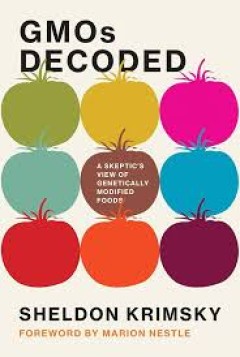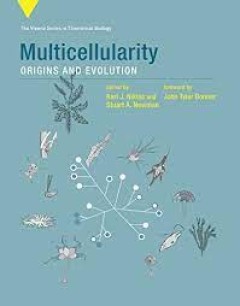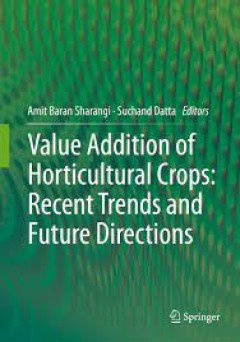Filter by

GMOs decoded a skeptic's view of genetically modified foods
The debate over genetically modified organisms: health and safety concerns, environmental impact, and scientific opinions. Since they were introduced to the market in the late 1990s, GMOs (genetically modified organisms, including genetically modified crops), have been subject to a barrage of criticism. Agriculture has welcomed this new technology, but public opposition has been loud and scient…
- Edition
- -
- ISBN/ISSN
- 9780262350747
- Collation
- 1 online resource (xxii, 191 pages) :illustrations
- Series Title
- -
- Call Number
- -

Producing power :the pre-Chernobyl history of the Soviet nuclear industry
An examination of how the technical choices, social hierarchies, economic structures, and political dynamics shaped the Soviet nuclear industry leading up to Chernobyl.OCLC-licensed vendor bibliographic record.
- Edition
- -
- ISBN/ISSN
- 9780262321792
- Collation
- 1 online resource (xxxi, 362 pages) :illustrations.
- Series Title
- -
- Call Number
- -

Climate of Capitulation: An Insider's Account of State Power in a Coal Nation
How power is wielded in environmental policy making at the state level, and how to redress the ingrained favoritism toward coal and electric utilities.OCLC-licensed vendor bibliographic record.
- Edition
- -
- ISBN/ISSN
- 9780262340663
- Collation
- 1 online resource (xi, 242 pages) :illustrations, map
- Series Title
- -
- Call Number
- -

Multicellularity origins and evolution
Scholars consider the origins and consequences of the evolution of multicellularity, addressing a range of organisms, experimental protocols, theoretical concepts, and philosophical issues.OCLC-licensed vendor bibliographic record.
- Edition
- -
- ISBN/ISSN
- 9780262333740
- Collation
- 1 online resource (xxv, 302 pages) :illustrations.
- Series Title
- -
- Call Number
- -

Seed activism :patent politics and litigation in the global south
"Seed Activism is an ethnography of court challenges to corporate intellectual property (IP) rights and practices in Brazil and India. Based on a wealth of interviews with a diverse range of actors-from farmers and plant breeders to corporate lawyers-the book offers the first detailed ethnographic account of the legal disputes that have arisen in the past decade around patents and royalties on …
- Edition
- -
- ISBN/ISSN
- 9780262372237
- Collation
- 1 online resource.
- Series Title
- -
- Call Number
- -

Smokestack diplomacy :cooperation and conflict in East-West environmental pol…
Many environmental problems cross national boundaries and can be addressed only through international cooperation. In this book Robert Darst examines transnational efforts to promote environmental protection in the USSR and in five of its successor states--Russia, Ukraine, and the Baltic republics of Estonia, Latvia, and Lithuania--from the late 1960s to the present. The core of the book is a c…
- Edition
- -
- ISBN/ISSN
- 9780262271196
- Collation
- 1 online resource (xii, 300 pages).
- Series Title
- -
- Call Number
- -

Warm-Temperate Deciduous Forests around the Northern Hemisphere
Warm-temperate deciduous forests are "southern", mainly oak-dominated deciduous forests, as found over the warmer southern parts of the temperate deciduous forest regions of East Asia, Europe and eastern North America. Climatic analysis has shown that these forests extend from typical temperate climates to well into the warm-temperate zone, in areas where winters are a bit too cold for the ‘z…
- Edition
- -
- ISBN/ISSN
- 978-3-319-01261-2
- Collation
- -
- Series Title
- -
- Call Number
- -
Phytocosmetics and Phytopharmaceuticals from African Medicinal Plants
- Edition
- -
- ISBN/ISSN
- 978-1-80356-020-5
- Collation
- -
- Series Title
- -
- Call Number
- -

Benefaction of Medicinal Plant Uraria picta
- Edition
- -
- ISBN/ISSN
- 978-1-83969-275-8
- Collation
- -
- Series Title
- -
- Call Number
- -

Value Addition of Horticultural Crops: Recent Trends and Future Directions
This book combines several ideas and philosophies and provides a detailed discussion on the value addition of fruits, vegetables, spices, plantation crops, floricultural crops and in forestry. Separate chapters address the packaging, preservation, drying, dehydration, total quality management and supply chain management of horticultural crops. The book explains value addition as a process of in…
- Edition
- -
- ISBN/ISSN
- 978-81-322-2262-0
- Collation
- -
- Series Title
- -
- Call Number
- -
 Computer Science, Information & General Works
Computer Science, Information & General Works  Philosophy & Psychology
Philosophy & Psychology  Religion
Religion  Social Sciences
Social Sciences  Language
Language  Pure Science
Pure Science  Applied Sciences
Applied Sciences  Art & Recreation
Art & Recreation  Literature
Literature  History & Geography
History & Geography